D-Penicillamine
Synonym(s):D- (−)-2-Amino-3-mercapto-3-methylbutanoic acid;D -Penicillamine;3,3-Dimethyl-D -cysteine;3-Mercapto-D -valine
- CAS NO.:52-67-5
- Empirical Formula: C5H11NO2S
- Molecular Weight: 149.21
- MDL number: MFCD00064302
- EINECS: 200-148-8
- SAFETY DATA SHEET (SDS)
- Update Date: 2025-08-20 16:56:19
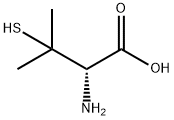
What is D-Penicillamine?
Absorption
rapidly but incompletely
Description
Penicillamine is an orally bioavailable copper chelator and penicillin degradation product. It increases urinary and fecal copper excretion and decreases liver copper concentration in a rat model of copper overload when administered at 0.67 mmol/kg per day, but does not affect kidney, spleen, or brain copper levels. Penicillamine (100 mg/kg per day) dissolves copper-rich granules in hepatic lysosomes of Long-Evans cinnamon (LEC) rats, which spontaneously develop hepatic injury and acute hepatitis and have a mutation homologous to that of the human Wilson disease gene. Penicillamine has anticonvulsant and proconvulsant effects in mice when administered at 0.5 and 250 mg/kg, respectively, which are blocked by the nitric oxide synthase (NOS) inhibitors L-NAME and 7-nitroindazole . Formulations containing penicillamine have been used to treat Wilson disease, cystinuria, and active rheumatoid arthritis.
Chemical properties
White to off-white crystalline powder
Originator
Cuprimine,MSD,US,1963
The Uses of D-Penicillamine
As a Penicillin metabolite, D-(-)-Penicillamin can be used in the treatment of Wilson’s disease, Cystinuria, Scleroderma and arsenic poisoning.
The Uses of D-Penicillamine
chelating agent (Cu), antirheumatic
The Uses of D-Penicillamine
D-(-)-Penicillamin is used as an antirheumatic and as a chelating agent in Wilson′s disease. It is used as a copper chelator to form mixed disulfides with cysteine or other sulfide media components. It is used to inactivate protein-1 DNA binding and to inhibit the growth of asynchronous cultures of rabbit articular chondrocytes.
Background
Penicillamine is a pharmaceutical of the chelator class. The pharmaceutical form is D-penicillamine, as L-penicillamine is toxic (it inhibits the action of pyridoxine). It is an α-amino acid metabolite of penicillin, although it has no antibiotic properties.
Indications
For treatment of Wilson's disease, cystinuria and active rheumatoid arthritis.
What are the applications of Application
Penicillamine is an exogenous NOS modulator and an antirheumatic and chelating agent used for Wilson′s disease
Definition
ChEBI: An optically active form of penicillamine having D-configuration. Pharmaceutical form (L-form is toxic) of chelating agent used to treat heavy metal poisoning.
Manufacturing Process
(a) Preparation of mercuric chloride complex of penicillamine: To a solution of 372 g (1 mol) of potassium benzyl-penicillin in 940 ml of distilled water at room temperature is added a solution of 40 g (1 mol) of sodium hydroxide in 180 ml of distilled water over a period of one-half hour. The solution is then stirred for two hours at room temperature. While maintaining room temperature, 67 ml of concentrated hydrochloric acid is added at a slow rate. This solution is then added, over a period of time of one-half hour, to a solution of 271 g (1 mol) of HgCl2 in 3.52 liters of distilled water in the presence of 50 g of Hyflo and 5 ml of octyl alcohol. After one hour of agitation, the resulting mixture is treated with 185 ml of concentrated hydrochloric acid and filtered.
(b) Removal of benzylpenilloaldehyde: To the filtrate obtained in step (a), warmed to 50°C is slowly added 108 g (1 mol) of phenyl hydrazine. The mixture is cooled to room temperature and 84 ml of concentrated hydrochloric acid are added. The mixture is agitated briefly and the precipitated benzylpenilloaldehyde phenyl hydrazone is filtered off.
(c) Preparation of isopropylidene penicillamine hydrochloride: To the filtrate obtained in step (b) is added at 20°C to 25°C a total of 85 g of hydrogen sulfide. The precipitated HgS is filtered off and the filtrate is concentrated under reduced pressure to a volume of 200 to 500 ml. Following a polish filtration, the product-rich concentrate is mixed with 1.5 liters of isobutyl acetate. The mixture is refluxed at about 40°C under reduced pressure in equipment fitted with a water separation device. When no further water separates, the batch is cooled to 30°C and filtered. The reactor is washed with 1 liter of acetone, which is used also to wash the cake. The cake is further washed with 200 ml of acetone. The acetone washes are added to the isobutyl acetate filtrate and the mixture is refluxed for 20 to 30 minutes. After a holding period of one hour at 5°C. the crystals of isopropylidene penicillamine hydrochloride are filtered and washed with 200 ml of acetone. On drying for twelve hours at 25°C this product, containing 1 mol of water, weighs about 178 g (73%).
(d) Preparation of penicillamine hydrochloride: The 178 g of isopropylidene penicillamine hydrochloride obtained in step (c) is dissolved in 350 ml of distilled water. The solution is heated at 90°C to 95°C for one to one and onehalf hours, removing acetone by distillation through an efficient column. There is then added 2.6 liters of isobutyl acetate. The mixture is refluxed at a temperature of about 40°C under reduced pressure in equipment fitted with a water separation device. When no further water separates, the pressure is adjusted so that the mixture distills at a vapor temperature of 83°C to 88°C. A total of 650 ml of distillate is collected. The batch is allowed to cool to 50°C and then filtered. The crystals are washed with isobutyl acetate and then dried at 35°C for 24 hours. The virtually anhydrous penicillamine hydrochloride obtained weighs about 128 g (69% from potassium benzyl-penicillin).
brand name
Cuprimine(Merck); Depen (Medpointe), Artamin (Sanabo, Austria), Atamir (Sandoz, Denmark), Dimetylcystein (Lilly, Denmark), Metalcaptase (Knoll, South Africa), Reumacillin (Leiras, Finland), Trisorcin (Merckle, Germany), Trolovol (Asta Medica, Germany).
Therapeutic Function
Antiarthritic
General Description
D-Penicillamine contains a β-lactam chemical structure.
Biochem/physiol Actions
Penicillamine is a characteristic degradation product of penicillin type antibiotics. One atom of copper combines with two molecules of penicillamine. Penicillamine reduces excess cystine excretion in cystinuria. This is by disulfide interchange between penicillamine and cystine, which results in formation of a readily excreted penicillamine-cysteine disulfide. Penicillamine interferes with the formation of cross-links between tropocollagen molecules and cleaves them when newly formed. Penicillamine lowers IgM rheumatoid factor and depresses T-cell activity.
Pharmacokinetics
Penicillamine is a chelating agent used in the treatment of Wilson's disease. It is also used to reduce cystine excretion in cystinuria and to treat patients with severe, active rheumatoid arthritis unresponsive to conventional therapy. Penicillamine is used as a form of immunosuppression to treat rheumatoid arthritis. Penicillamine inhibits macrophages, decreases IL-1 and the number of T-lymphocytes, and prevents collagen cross linkage. In Wilson's disease it binds copper, allowing it to be eliminated in the urine.
Clinical Use
Rheumatoid arthritis, Wilson’s disease, cystinuria, lead poisoning, chronic active hepatitis
Safety Profile
Poison by intraperitoneal route. Moderately toxic by subcutaneous and intravenous routes. Mildly toxic by ingestion. An experimental teratogen. Human systemic effects by ingestion: agranulocytosis, dermatitis, fever, hemorrhage, increased body temperature, dermatitis, leukopenia, proteinuria, thrombocytopenia. Human teratogenic effects by an unspecified route: developmental abnormalities of the craniofacial areas, skin, and skin appendages, and body wall. Experimental reproductive effects. Questionable human carcinogen producing leukemia. Mutation data reported. Used in the treatment of rheumatoid arthritis, metal poisonings, and cystinuria. When heated to decomposition it emits very toxic fumes of NOx and SOx. See also MERCAPTANS.
Synthesis
d-penicillamine can be synthesized in a multistep process that begins with
heating isobutyraldehyde, pyridine, sulfur, and
ammonia in benzene to form 5,5-dimethyl-2-
isopropyl-?3-thiazoline. Treatment with hydrogen cyanide gives 4-cyano-5,5-dimethyl-
2-isopropylthiazolidine, which on acid hydrolysis gives d,l-penicillamine hydrochloride. Resolution is accomplished by
conversion of the racemate to d,l-3-formyl-
2,2,5,5-tetramethylthiazolidine-4-carboxylic
acid by treatment first with acetone, then
with acetic formic anhydride. The enantiomers are separated in the usual manner,
using, for example, l-lysine or d-(?)-
threo-1-(4-nitrophenyl)-2-aminopropane-1,3-
diol. Acidification liberates d-3-formyl-
2,2,5,5-tetramethylthiazolidine-4-carboxylic
acid, which is hydrolyzed with hydrochloric
acid to yield d-penicillamine hydrochloride.
Neutralization with ethanolic triethylamine affords d-penicillamine.
Drug interactions
Potentially hazardous interactions with other drugs
Antipsychotics: avoid with clozapine (increased risk
of agranulocytosis).
Sodium aurothiomalate: increased risk of
haematological toxicity
Metabolism
Hepatic
Metabolism
Penicillamine undergoes limited metabolism in the liver,
to S-methyl penicillamine.
It is mainly excreted in the urine as disulfides, along with
some S-methyl penicillamine and unchanged drug; a small
amount may be excreted in the faeces
Purification Methods
The melting point of D-(-)-penicillamine depends on the rate of heating (m 202-206o is obtained by starting at 195o and heating at 2o/minute). It is soluble in H2O and alcohols but insoluble in Et2O, CHCl3, CCl4 and hydrocarbon solvents. Purify it by dissolving it in MeOH and adding Et2O slowly. Dry it in vacuo and store it under N2. [Weight et al. Angew Chem, Int Ed (English) 14 330 1975, Cornforth in The Chemistry of Penicillin (Clarke, Johnson and Robinson eds) Princeton Univ Press, 455 1949, Review: Chain et al. Antibiotics (Oxford University Press) 2 1949, Polymorphism: Vidler J Pharm Pharmacol 28 663 1976]. The D-S-benzyl derivative has m 197-198o (from H2O), [] D 17 -20o (c 1, N NaOH), -70o (N HCl). [Beilstein 4 IV 3228.]
Properties of D-Penicillamine
| Melting point: | 210 °C (dec.)(lit.) |
| Boiling point: | 251.8±35.0 °C(Predicted) |
| alpha | -65 º (c=5, 1M NaOH, on dry) |
| Density | 1.113 (estimate) |
| refractive index | -63 ° (C=1, 1mol/L NaOH) |
| storage temp. | 2-8°C |
| solubility | H2O: soluble100mg/mL |
| form | Powder |
| pka | pKa 7.83±0.01(H2O,t =37±0.05,I=0.15)(Approximate) |
| color | White to almost white |
| Water Solubility | 11.1 g/100 mL (20 ºC) |
| Merck | 14,7088 |
| BRN | 1722375 |
| Stability: | Stable. Incompatible with strong oxidizing agents. |
| CAS DataBase Reference | 52-67-5(CAS DataBase Reference) |
| NIST Chemistry Reference | Penicillamine(52-67-5) |
| EPA Substance Registry System | Penicillamine (52-67-5) |
Safety information for D-Penicillamine
| Signal word | Warning |
| Pictogram(s) |
 Health Hazard GHS08 |
| Precautionary Statement Codes |
P201:Obtain special instructions before use. P202:Do not handle until all safety precautions have been read and understood. P280:Wear protective gloves/protective clothing/eye protection/face protection. P308+P313:IF exposed or concerned: Get medical advice/attention. P405:Store locked up. P501:Dispose of contents/container to..… |
Computed Descriptors for D-Penicillamine
| InChIKey | VVNCNSJFMMFHPL-VKHMYHEASA-N |
New Products
4,4-Difluoropiperidine hydrochloride tert-butyl 9-methoxy-3-azaspiro[5.5]undecane-3-carboxylate Indole Methyl Resin N-Isopropylurea N,N-Dicyclohexylcarbodiimide(DCC) MELDRUMS ACID 5-METHYLISOXAZOLE-4-CARBOXYLIC ACID Magnessium Bis glycinate Zinc ascorbate 1-bromo-2-butyne 2-acetamidophenol 9(10H)-anthracenone Erythrosin B, 4-Piperidinopiperidine 2-((4-morpholinophenylamino) (methylthio) methylene) malononitrile 2,4-dihydroxybenzaldehyde 3-(4-morpholinophenylamino)-5-amino-1H-pyrazole-4-carbonitrile Methyl 2-methylquinoline-6-carboxylate 2,6-dichloro-4-nitropyridine 4-Bromo-2-chlorobenzonitrile 2-(benzylamino)acetic acid hydrochloride 4-(tert-Butoxycarbonylamino)but- 2-ynoic acid 3,4-dihydro-2H-benzo[b][1,4]dioxepine 1-Phenyl-1-cycloprppanecarboxylicacidRelated products of tetrahydrofuran
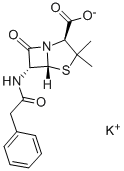
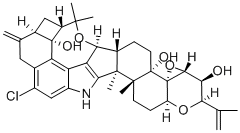


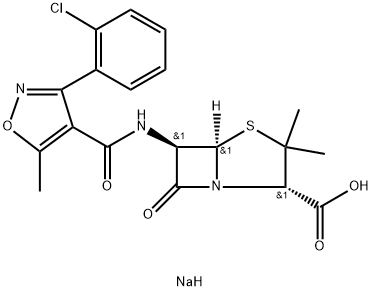
![7-(2,2-DIMETHYL-5-OXO-4-PHENYL-IMIDAZOLIDIN-1-YL)-3,3-DIMETHYL-6-OXO-2-THIA-5-AZABICYCLO[3.2.0]HEPTANE-4-CARBOXYLIC ACID](https://img.chemicalbook.in/CAS/GIF/3511-16-8.gif)

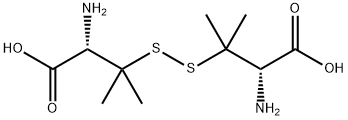
You may like
-
 D-Penicillamine 99%View Details
D-Penicillamine 99%View Details -
 D-Penicillamine 99%View Details
D-Penicillamine 99%View Details -
 D(-)-Penicillamine, 99+% CAS 52-67-5View Details
D(-)-Penicillamine, 99+% CAS 52-67-5View Details
52-67-5 -
 D-Penicillamine CAS 52-67-5View Details
D-Penicillamine CAS 52-67-5View Details
52-67-5 -
 D-(-)-Penicillamine 95.00% CAS 52-67-5View Details
D-(-)-Penicillamine 95.00% CAS 52-67-5View Details
52-67-5 -
 D-Penicillamine 97% CAS 52-67-5View Details
D-Penicillamine 97% CAS 52-67-5View Details
52-67-5 -
 Penicillamine 99% (HPLC) CAS 52-67-5View Details
Penicillamine 99% (HPLC) CAS 52-67-5View Details
52-67-5 -
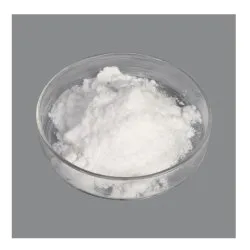 D Penicillamine APIView Details
D Penicillamine APIView Details
52-67-5
